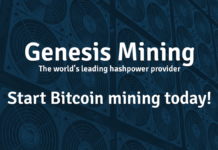After a roaring mid-June that saw the value of the Ether token almost double, prices have settled back down to the pre-June price of about $225. This was still an unbelievable feat in May, since the token start that month valued at near $9. Analysts (professional and amateur) went wild with speculation on what the jump meant at that time, what the future of this technology holds, and what the “correction” back down to current values from its all-time high of $394.
One consistent streak through all of that analysis was that initial coin offerings (ICOs) were at least partially responsible for both the rise and the fall of Ethereum. Take the recent Huffpost article about the ICO “craze”. It points out that $600 million have been raised in ICOs (for the uninitiated this is like an IPO for crypto, only it usually happens with just an idea, a whitepaper and some code) in just the last 30 days.
Many think this will continue and that “alt” coins will be a dominant factor in the cryptocurrency market for years to come. This conclusion more so with Ethereum than Bitcoin, since Bitcoin is already relegated to being a currency and a currency only, while Ethereum touts to be a currency, protocol, and platform on which other coins are built.
In this article, we’ll examine some alt coins and their effect on the future value opportunity of Ether.
Let’s start with fundamentals. There are now thousands of alt coins being either traded or developed. Many have very specific functions—coins meant to use cryptocurrency trading within industries like real estate, data storage, and even for marijuana growers. Within the alt coin market, there is a subset of tokens that are built on the Ethereum protocol—the underlying technology that gives Ether its value. These are referred to as ERC20 tokens. You can reach much more about that here.
Some of the ERC20 tokens are amongst the highest valued tokens out there. In this chart, sorted by market capitalization, you’ll see at least four in the top 25 or so—EOS, QTUM, Iconomi, and Golem. Here’s a full list of these tokens.
Okay, so let’s connect our two dots here and then talk about value. Each of these coins (listed above and in the linked list) had an ICO and likely “raised” tens of millions of dollars. Raised is in quotations there since different coins will choose how to organize their fundraising in this since, many take in and use this infusion of capital to roadmap our their technological ambitions, and some put it away for later days to hedge the future of their idea. This isn’t so different than other companies, but with the exception that most of these are not fully formed companies yet. Some have engineering teams of 5-6 with a few product leaders and co-founders. It’s a lot of capital to be plugged into this arena, and that’s one reason that speculators think ICOs are fueling volatility and doubt.
The other consideration is that these fundraising rounds happen with other cryptocurrencies. It’s never with dollars. While you can use sites like Gemini or Coinbase to turn USD or other currencies into crypto, you cannot do so with an ICO. So these coin companies come into millions of dollars’ worth of Bitcoin or Ether and often have to sell it back or “dump” it immediately. Here’s a longer article on that effect of this, using the example of Tezos, which raised $200+ million in its ICO.
Okay, so that’s part of the danger. One might ask: if you’re an investor in Ethereum, these ICOs seem to be absolutely killing the value and limiting its upside. And you’d be partially right except for the opportunity of these coins based on Ethereum.
Let’s take Golem as an example. Golem is one of the more interesting ideas out there. It seeks to use Ethereum’s blockchain technology to crowdsource open computing power (on your laptop, for instance) to allow for decentralized supercomputer. Some have called it “the Airbnb of unused computer power”. Its token (GNT) would be used to facilitate the blockchain computations necessary and allow those lending their space to earn coins, and thus value, through that.
If Golem picks up and finds a user base, you will have a wider use case for the Ethereum protocol. You’ll also have competitors looking to do the same (likely using a similar underlying coding technology). With each use of Golem, and thus the Ethereum protocol, you the cost of “gas” (computational power) to utilize the blockchain that will have to use Ether—and either be “mined” or use “proof of stake” to confirm the block. This means there’s a lot more happening within Ether. In this way, you can liken Golem to an app on your iPhone and Ether to iOS. Though it’s not that cut and dry (miners, for instance, add an element that’d be like a decentralized group of people trying to make the next iOS version).
For another view into how ICOs can help Ethereum, check out this Reddit user’s post. (A note: we fully realize Reddit might not be a reputable source, but without a strong community of analysts looking at cryptocurrency, it at least is a place for more in-depth discussions. Read with your own discernment. Here’s another take too if you’re interested.)
The main takeaway from these? If all works correctly, Ethereum should maintain a market cap that is at least—or very close to—the combined market cap of ERC20 tokens. Some of these ERC20 tokens are among the most innovative in the whole industry. Meaning, they aren’t Potcoin.
Lastly, there are some that think that the rising cost of Ethereum (and other coins) will hurt its ability to be transactional. I don’t see that being true—the same was talked about with Bitcoin when it was valued around $1,000 and it’s gone up 280% since. Gas prices will have to be adjusted and the road of taking ERC20 tokens to power specific use cases of Ethereum are actually a way to use those tokens for trading with Ether used to power the network (and earn value on the network effect of users).
The ICO craze is certainly in full swing and the volatility here that keeps many investors at bay likely won’t subside until there’s less coin offerings and more coin earnings (I see this being a big theme in 2018, but more on that later). Still, for those that think that other tokens and coins are hurting Ethereum, I see mostly positives for the value of what could be the protocol and engine behind several billion dollar coins (worldwide web, anyone?)
Disclosure: I am/we are long ETHEREUM.
I wrote this article myself, and it expresses my own opinions. I am not receiving compensation for it (other than from Seeking Alpha). I have no business relationship with any company whose stock is mentioned in this article.
Our Social Networks: Facebook Instagram Pinterest Reddit Telegram Twitter Youtube








